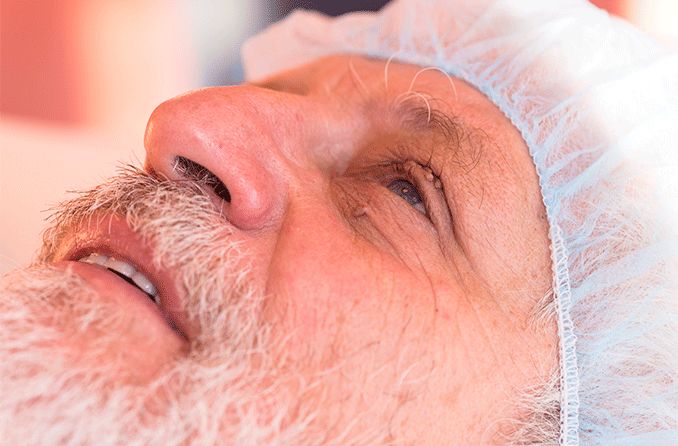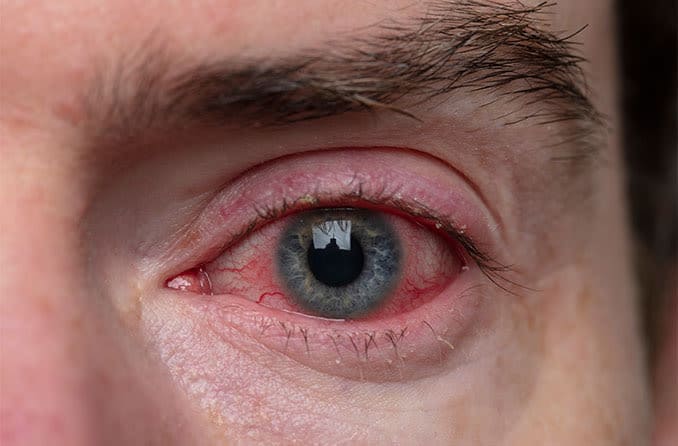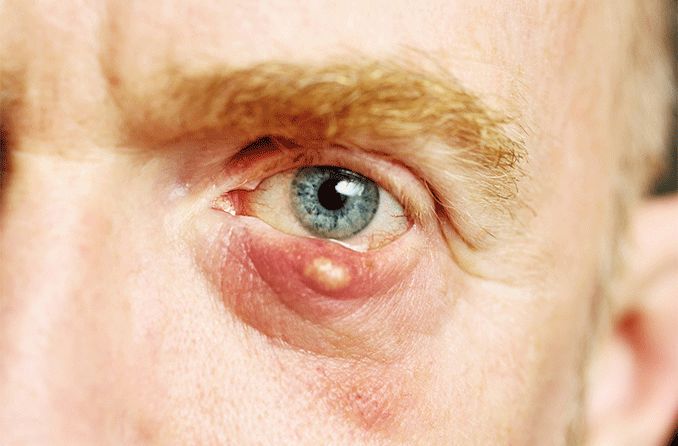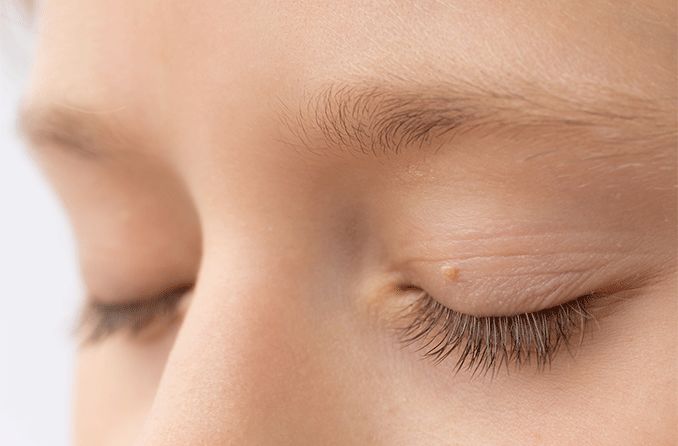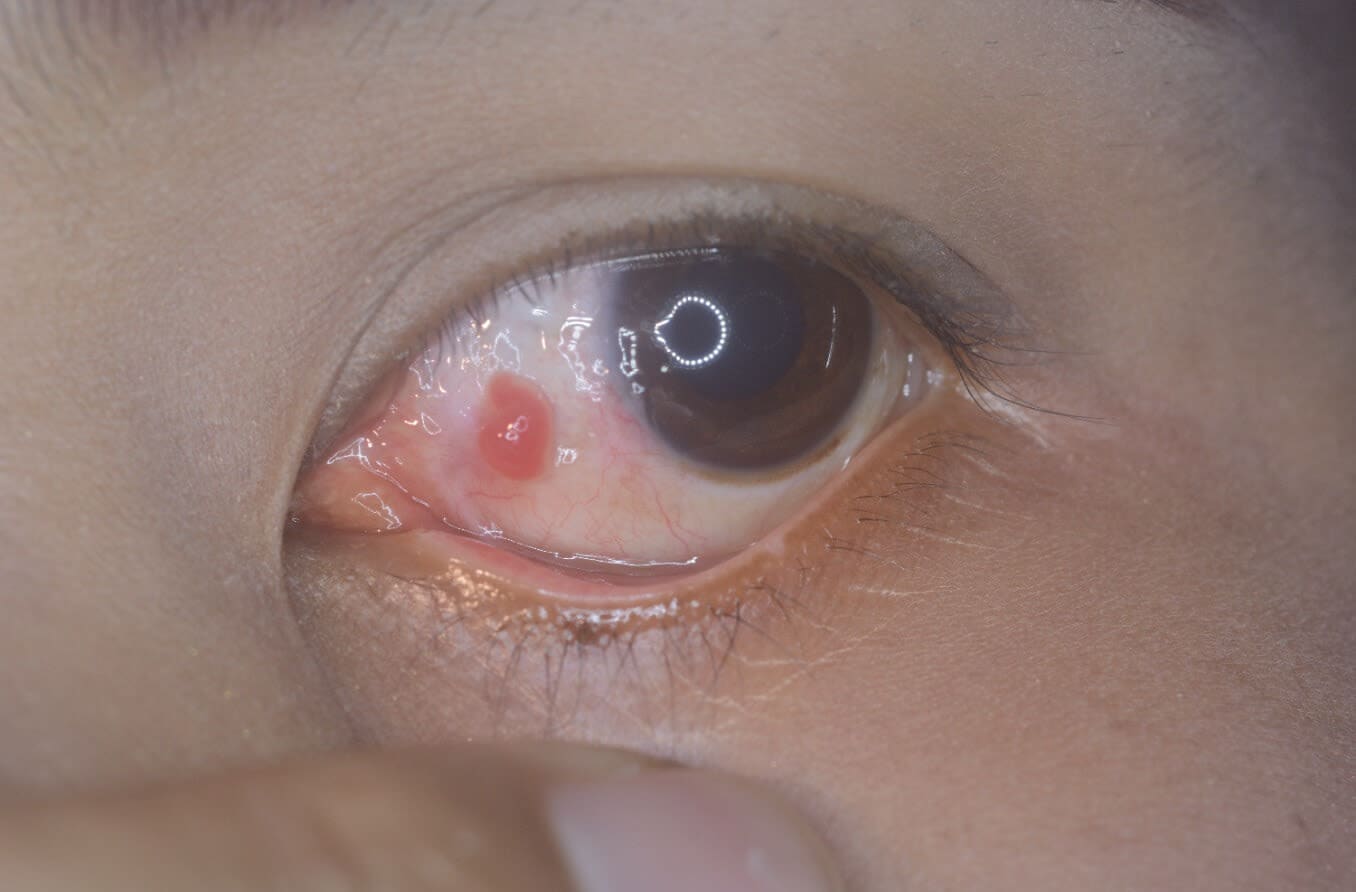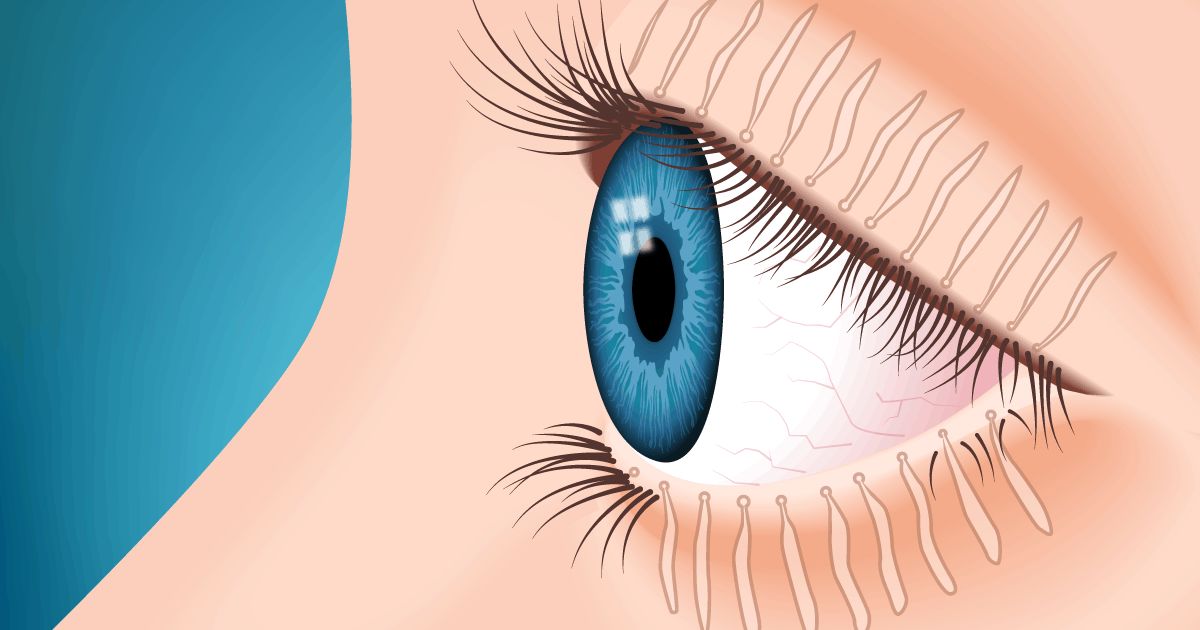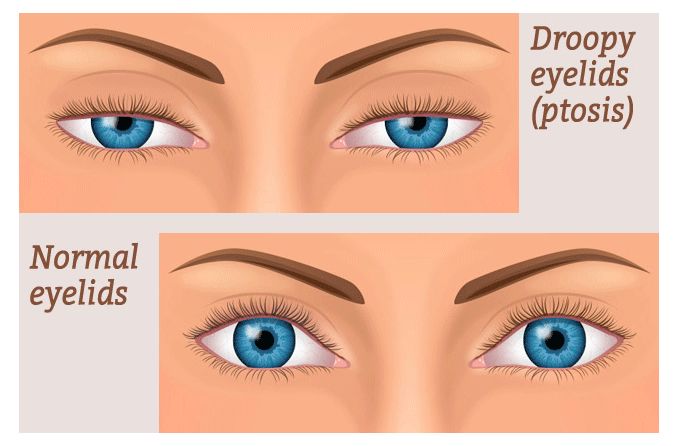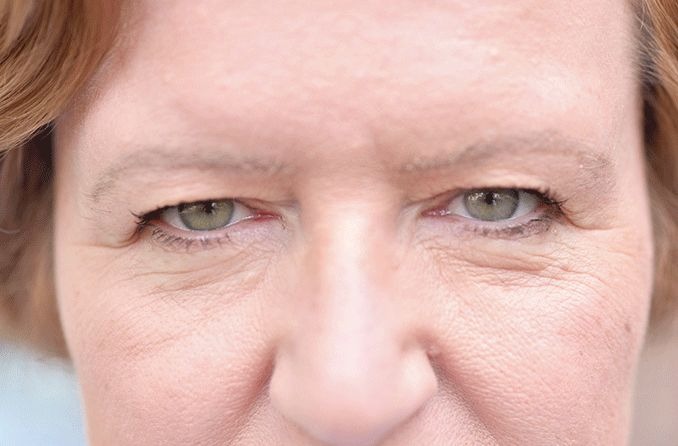What is an eyelid papilloma?
An eyelid papilloma is one of the most common benign eyelid tumors. An eyelid papilloma looks like a skin tag or a lesion that’s flesh-colored, pink or dark brown. Most cases of eyelid papilloma occur in middle-aged or elderly people. The condition is usually benign.
Types of eyelid papilloma
Squamous papilloma – Squamous papilloma is the most common benign tumor of the eyelid. It’s also known as an acrochordon or a skin tag. The lesion is soft, smooth, round and attached by a “stalk” to the eyelid.
Seborrheic keratosis – A seborrheic keratosis papilloma may be a pink or flesh color or dark brown. Seborrheic keratosis is slightly raised and looks “stuck” on the eyelid. Lesions vary in shape, and the surface may feel greasy.
Ophthalmic molluscum contagiosum – This eyelid papilloma may be one or multiple small, solid, raised round bumps on the eyelid. The lesion is pale and waxy. The inside is cheesy or wax-like and may come out as a discharge. This type is more common with children, people with AIDS or someone who has a genetic disposition to allergies.
Sebaceous cyst – Sebaceous cysts are smooth, round and raised. These lesions are filled with skin cells, fat, cholesterol crystals and keratin.
Verruca vulgaris – This rare eyelid papilloma is a flesh-colored skin growth that looks like squamous papilloma.
What causes an eyelid papilloma?
An eyelid papilloma can occur for different reasons. It helps to understand what makes your eyelids vulnerable to these benign growths.
The skin on your eyelid is the thinnest on your body. Even so, there is more to the eyelid than what you can see on the surface.
Your eyelids are made of tissue, skin and muscle. Inside your eyelid is also the conjunctiva , a clear, thin membrane that covers the inner surface of the eyelids and front surface of the eye. The eyelid also contains a fibrous layer that helps your eyeball move.
Both benign and malignant lesions can start within the eyelid. Yet most eyelid papillomas are benign.
The cause of eyelid papillomas depends on which type you have:
Squamous papillomas and seborrheic keratosis papillomas happen when cells in the eyelid skin multiply. There is no known cause for either type of eyelid papilloma.
Ophthalmic molluscum contagiosum is a viral infection caused by a DNA poxvirus called MC virus. The virus is spread to young children by skin-to-skin contact and to adults through skin-to-skin or sexual contact.
Sebaceous cyst eyelid papillomas are caused by blocked glands associated with eyelid hair follicles.
Verruca vulgaris is caused by human papillomavirus (HPV), the most common sexually transmitted disease. HPV can infect the eyelid if your fingers are contaminated when you touch your eye.
Eyelid papilloma symptoms
An eyelid papilloma can be a single growth or a cluster of growths. The surface can be either smooth or rough. An eyelid papilloma may or may not be about the same color as the skin surrounding it. Eyelid papillomas are painless, but the condition can cause mild irritation. An eyelid papilloma can be unsightly, prompting a visit to an eye doctor for removal.
RELATED READING: What causes eyelid bumps?
Eyelid papilloma treatment
An eyelid papilloma isn’t painful, so some people don’t seek treatment for the condition. Many people have an eyelid papilloma for months or years before they seek treatment.
Still, if you notice a lesion on your eyelid, make an appointment with your eye doctor. That way, the doctor can make sure it’s not eyelid cancer or another serious medical condition.
Usually, you won’t notice much change or growth over time. Papillomas don’t bleed or drain unless you pick at them and they become infected. Sometimes, an eyelid papilloma might weigh down your eyelid or get inflamed.
Your eye doctor can monitor an eyelid papilloma during regular eye exams for any suspicious changes. If you’re self-conscious about the growth or the lesion becomes irritated, you don’t have to live with it, though. An eyelid papilloma is usually simple for an experienced physician to remove.
Is there an eyelid papilloma home treatment?
If you find an eyelid papilloma home treatment online, don’t try it. Instead, schedule an eye exam with your eye doctor. The doctor can make a proper diagnosis and suggest eyelid papilloma treatment or removal options.
SEE RELATED: Eye cancer: Types, symptoms and treatments
Eyelid papilloma removal
Your eye doctor can remove an eyelid papilloma with a simple procedure called an excision.
During the procedure, your eye doctor adds an eye drop so your eye won’t become irritated from the cleaning solution. The doctor also numbs the area with a small amount of local anesthesia.
Then the doctor cuts at the base of the lesion to remove the eyelid papilloma. The doctor may also use a small cautery tool, a device that heats the area to stop bleeding. The eye papilloma excision doesn’t usually require stitches. Your doctor may send the removed tissue to a pathologist for biopsy. This is to make sure the growth is indeed benign.
Your doctor will prescribe a topical antibiotic to help the excision area heal within a week or two and prevent infection.
An eye doctor may remove a verruca vulgaris eye papilloma with a freezing treatment called cryotherapy. The doctor will numb the eye and freeze the verruca vulgaris tissue with liquid nitrogen or another extremely cold substance. The area will turn red and may blister afterward but usually heals within a week or two.
What should I do if I think I have an eyelid papilloma?
Schedule an eye exam with your eye doctor as soon as possible if you think you have an eyelid papilloma. While eyelid papillomas are usually benign, some eyelid tumors or lesions share a similar appearance and could be cancerous or precancerous. An eye doctor can rule out cancer, like basal cell and sebaceous carcinoma, or other serious eye conditions.
In general, the most concerning eyelid lesions show these characteristics:
Growth
Discoloration
Irregular borders
Bleeding
Your doctor can also tell you about eyelid papilloma treatment options. If you don’t choose eyelid papilloma removal, make sure you still continue to have regular eye exams.
That way, your eye doctor can monitor the papilloma for any changes that cause concern. If the eyelid papilloma grows large or becomes irritated, you and your doctor can discuss removing it.
READ NEXT: What is a syringoma?
